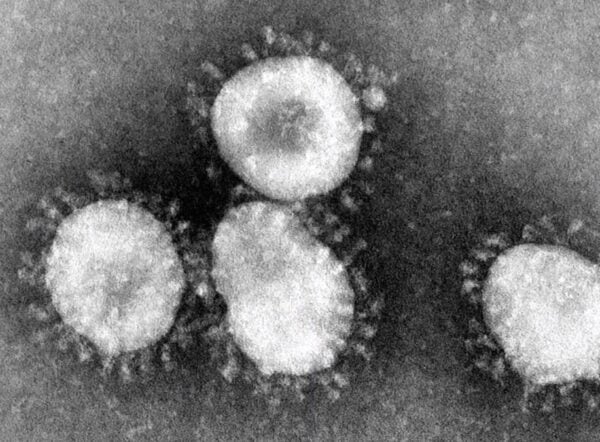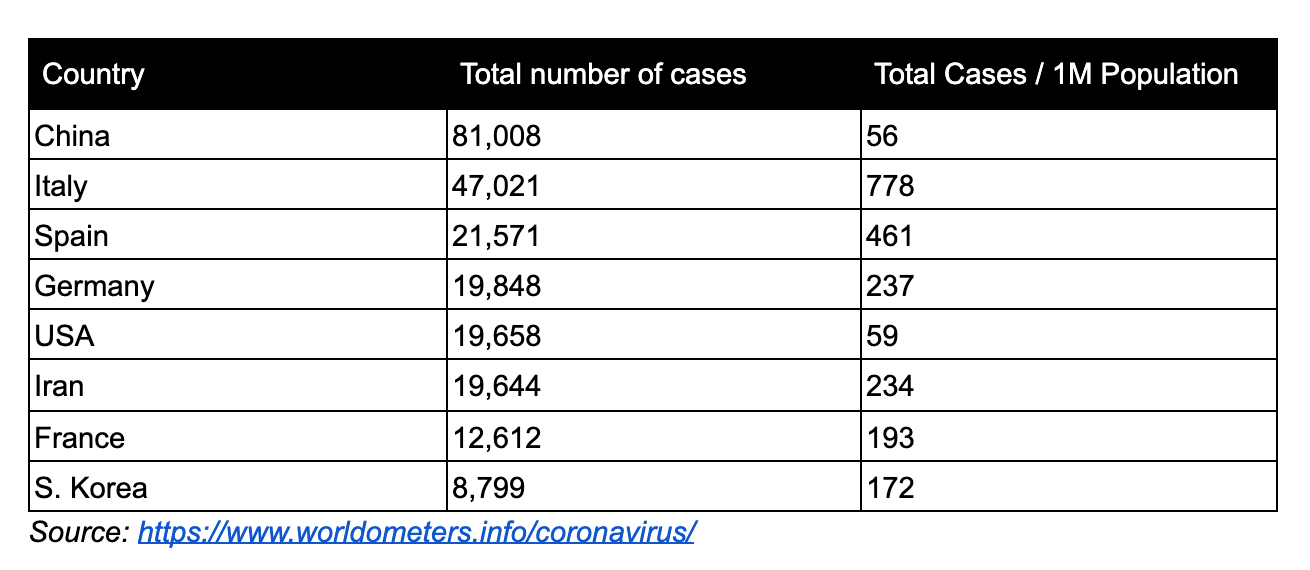

A report by Aaron Ginn at Medium includes excellent analysis of the current status of the coronavirus based on data to date. The overall summary is things are getting much better.
It’s time for the US and other nations to move from the cautious stage in handling the coronavirus to the data stage. And the data is showing significant improvements with the virus. Below are some significant points from the analysis:
1. The current charts are not helpful as they instill fear and are not relevant.
This chart, for example, shows only total cases to date which is no longer a relevant number:

The situation looks serious, yet we know that this virus is over four months old, so how many of these cases are active?
2. On a per capita basis the numbers are less concerning:

3. The China coronavirus is spreading but probably not accelerating:
4. The coronavirus will decline no matter what the media says:
The virus is on a bell curve as the numbers from China and South Korea point out. This thing reaches a peak and then declines as viruses typically do:
5. You have a low probability of catching the coronavirus:
Ginn summarizes:
To summarize, China, Singapore, and South Korea’s containment efforts worked because community-based and airborne transmission aren’t common. The most common form of transmission is person-to-person or surface-based.
Although the China virus may stay on surfaces, it likely loses it potency in a very short period of time.
6. The virus will likely burn off in the summer like other viruses:
The University of Maryland mapped severe COVID-19 outbreaks with local weather patterns around the world, from the US to China. They found that the virus thrives in a certain temperature and humidity channel. “The researchers found that all cities experiencing significant outbreaks of COVID-19 have very similar winter climates with an average temperature of 41 to 52 degrees Fahrenheit, an average humidity level of 47% to 79% with a narrow east-west distribution along the same 30–50 N” latitude”, said the University of Maryland.
The green area above is where the virus is currently thriving. It does not do well in hotter and more humid environments.
7. As we have noted, children and teens are less affected.
8. The fatality rate is declining:
Based on this data Ginn suggests we should probably open up schools and public places. The numbers indicate it would be ok.
More people are concerned about government actions impacting the economy than are concerned about the virus.
The post Data Analysis Indicates Coronavirus is Slowing with a Declining Fatality Rate with Warmer Weather Likely Slowing it Considerably appeared first on The Gateway Pundit.
